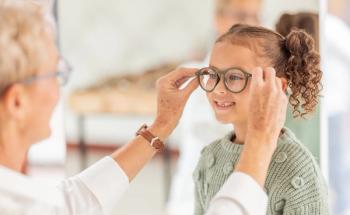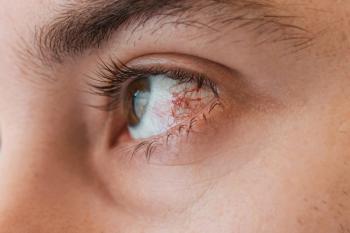
AAOpt 2024: Controversies in the management of keratoconus
Clark Chang, OD, MSA, MSc, FAAO, discussed the complexities of diagnosing keratoconus in his Rapid Fire presentation given at the American Academy of Optometry 2024 meeting.
Clark Chang, OD, MSA, MSc, FAAO, from Wills Eye Hospital and Glaukos Medical Affairs, discussed the complexities of diagnosing keratoconus in an American Academy of Optometry 2024 meeting. The presentation was given alongside Brooke Messer, OD, FAAO, FSLS; Jason Jedlicka, OD, FAAO; and John Gelles, OD, FIAO, FCLSA, FSLS, FBCLA.
Chang emphasized that central pachymetry is unreliable and referenced a 2022 study showing that pupil at apex and the thinnest point are the most heritable corneal traits in keratoconus patients. Chang also mentioned the potential of optical coherence elastography (OCE) for assessing corneal biomechanics, which could aid in diagnosing and monitoring keratoconus. He anticipates that future advancements in diagnostic tools will improve patient management and solve puzzling cases.
Video transcript:
Editor's note: The below transcript has been lightly edited for clarity.
Clark Chang, OD, MSA, MSc, FAAO:
Hi everyone. This is Clark Chang from Cornea Service at Wills Eye Hospital in Philadelphia, as well as medical affairs in Glaukos. Just came out of a panel, avery exciting panel lecture focusing on the controversies in keratoconus management. It was too much to cover, so I would like to focus on an area that I presented, and that mainly is the diagnosis of keratoconus. So we presented cases of patients who are puzzling to us, such as those who have some mild amount of irregularity on tomography, topography, but yet are seeing 20/20 or better, as well as those who are confirmed keratoconus patients, just as an example, who the hot spot of the keratoconus areas getting bigger, but no curvature changes, for example, the Kmax stays constant. Is that a form or worsening? Should we be treating patient any differently? So I think that highlights the importance of how we approach with our diagnosis of patients, right?
And I'll skip all the current diagnostic that we're using, whether it's refractive changes or 1 diopter or more, or your topography, tomography. Let's skip ahead and say what other things may be coming to us in the future, or that potentially we could even use a little bit of the concepts now. So one thing is pachymetry. I personally also have said this before –2015 global consensus paper on management of keratoconus and ectasia – had pointed to the fact that a single point, especially central pachymetry, relying on that for diagnosis of keratoconus is the least reliable clinical factor. And I think while that's true, if you look at more recent publications, such as Wang et al in 2022, that looked at heritable corneal traits by tomography between keratoconus patients and their parents. They found that the the most heritable trait actually is pachymetry at pupil, at apex and at the thinnest point, roughly about 40 something percent chance of corresponding between keratoconus patients and their parents. So that tells us that it's unlikely to be single point pachymetry, and that is still true, but the distribution of pachymetry, probably from the thinnest point or from the apex – luckily, that corresponds pretty well in keratoconus patients anyway near the same location.
What is that relationship is like going outward? So you already have a tomography device that could give you that. But in the cases that I've told you, it still wasn't enough to let us know if this patient's keratoconus or if that patient is progressing, such as if the area of the hot spot cone is getting bigger, but no curvature changes. So maybe going more upstream to seek for the root of the problem, such as corneal biomechanics. We have one currently available in the US commercially, but, you know, better for glaucoma application rather than corneal application.
So we did an Arvo poster presentation this year, 2024 you can certainly look it up. But we looked at the application of OCE, which is optical coherence elastography, using a very small, single citation source to set off a wave and then try and then monitor the propagation of the wave across the tissue. So that we could test the different strengths. We could test the biological strength of the tissue at different axes and meridian. And that may then give us some hint of focal or diffuse weakness in a corneal tissue in the future. When do you point treatment, such as corneal cross linking, that's FDA approved, or is it glasses? Is it contact lenses and monitoring? So I think once we have more of this data in the future, we'll be able to monitor our patients better and solve some of these puzzling cases, and I look forward to seeing you next time.
Newsletter
Want more insights like this? Subscribe to Optometry Times and get clinical pearls and practice tips delivered straight to your inbox.



















































.png)


